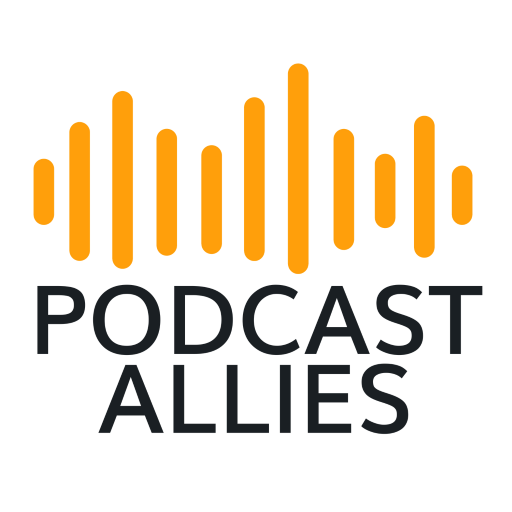How (and Why) to Measure Your Branded Podcast’s Impact
“I know how and why audiences respond to podcasts.”
About a year ago, I spotted this tagline on the LinkedIn profile of Paul Riismandel, chief insights officer and partner at audio research firm Signal Hill Insights.
His tagline was catnip to me, so I introduced myself to Paul. He’s been researching audio for a couple of decades. He’s a fount of wisdom about what audiences like, what they don’t like, and what podcasts do for us and for our branded clients.
Paul joined me on the Sound Judgment podcast to discuss how you can be more in tune with listeners’ wants and needs, and how you can use survey research to win renewals from your branded clients.
Thinking about adding a listener survey to your plan in 2024?
Visit www.measureyourpodcast.com to sign up for a four-part email series (from Signal Hill Insights) on how to do this right.
Why Measure?
If you make branded podcasts for an organization, at some point, your clients will ask, “Should I keep making this?” And: “Is this worth it?” Anticipate these questions from the outset – while you’re pitching and developing the show. Since making a podcast is a significant investment, it’s important to demonstrate to yourself and your clients that you’re prepared to answer these questions.
We should all survey our listeners. This is doubly true if we make branded podcasts. At some point, our clients will ask, “What exactly is this podcast doing for us?” That’s likely to come up right when you want to renew that contract.
While you’re at the proposal stage, create and share your research plan. Showing clients that you’ll offer relevant listener data demonstrates that you have their needs in mind.
In order to create a useful survey, you need to determine the brand objective up front. That’s the term for understanding what your client (or you) want the podcast to do for you or your organization. Often, brands are looking for awareness, but sometimes they want to elevate a particular campaign— say, spreading the word about efforts to increase gender and racial equity, common objectives right now.
A survey will uncover whether your listeners understood your brand objective. But you’ll also ask, “Did you find the podcast entertaining? Did it hold your attention? How would you rate the hosts?”
What should you measure?
There are two concrete ways of measuring how listeners respond to branded podcasts.
Brand lift: The change in a listener's perception or attitude about a brand.
To determine the impact of your podcast on brand lift, “We compare the responses of somebody who heard the podcast to somebody who didn’t hear it,” Paul says.
Additionally, in your listener survey, ask questions like:
“Are you thinking about the brand?”
“Are you considering the brand? For example, if you’re going to buy a new vehicle, are you considering a Chevy, a Ford, or a Tesla?”
“Are you likely to purchase the brand?”
Halo effect: The positive impact for a brand that results from sponsoring good content. Ask:
First of all, do you know the sponsor? (Did the listener associate the sponsor with the podcast?)
If yes, does the association make you more or less favorable towards the brand?
On average, 61 percent of listeners say their opinion of a brand is more favorable as a result of listening to that branded content. That’s the result of making great content that listeners appreciate.
Use listener insights to improve your content
It may be obvious, but it bears repeating: The more we know about our listeners, the more we can meet their needs. But knowing that it’s smart to survey listeners and readers doesn’t mean we know exactly how.
Here are some specific strategies from Paul:
Ask these four fundamental questions:
Did the podcast hold your attention? (Yes or no. We want to know the negative and the positive.)
Did you learn something?
Was it entertaining?
Did you like the host?
Learn whether your show is “word-of-mouth-worthy”
Would you recommend this episode to a friend?
Would you listen to another episode? Was the content compelling enough to make you say, “Hey, I want to come back!”
Plan and budget wisely for survey research
If you’re producing a podcast with a six-figure budget, plan from the outset to outsource a listener survey to a professional research firm. Your client or partner will want the data — and it will help you earn a contract renewal.
Less than a six-figure budget? Create your own DIY survey. To ask useful questions, clarify your objectives up front, including the basics:
Why does this podcast exist?
What do you hope listeners get out of it?
What are your brand objectives? What does the brand want to achieve with the podcast?
How might you answer these questions? That’ll be the basis for your DIY survey.
Listeners are bombarded with surveys. How can I get them to answer mine?
I asked Paul how to increase the chances that listeners or readers will respond. Naturally, he suggested an incentive — for instance, offering to share survey results with participants.
In my case, as the producer of an educational show for audio storytellers, he said, “Your listeners might love to get a little consult with you!”
If the chance to win a free coaching session with me would incentivize you to answer a Sound Judgment survey, let me know. We’re taking Paul Riismandel’s advice soon, and I want to know how to persuade you to participate!
Signal Hill has created a special email newsletter that will walk you through how to measure the impact of your podcast.
Go to measureyourpodcast.com to sign up.
You won’t be put on a permanent mailing list!
Listen to the Measure Your Podcast series:
Thanks to Signal Hill Insights for sponsoring these Sound Judgment episodes and this “How to Measure Your Podcast” series.

